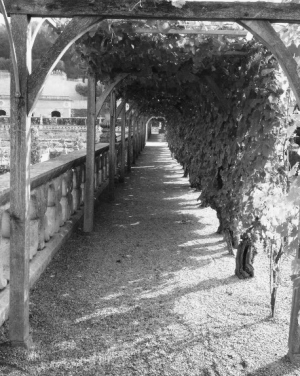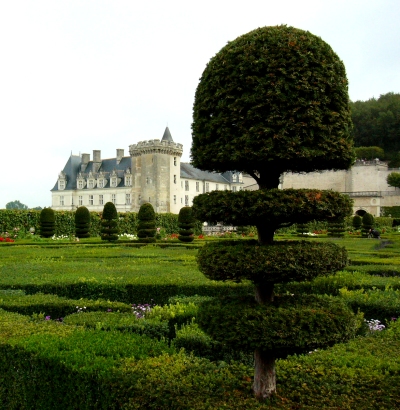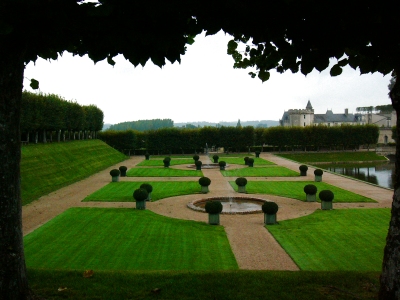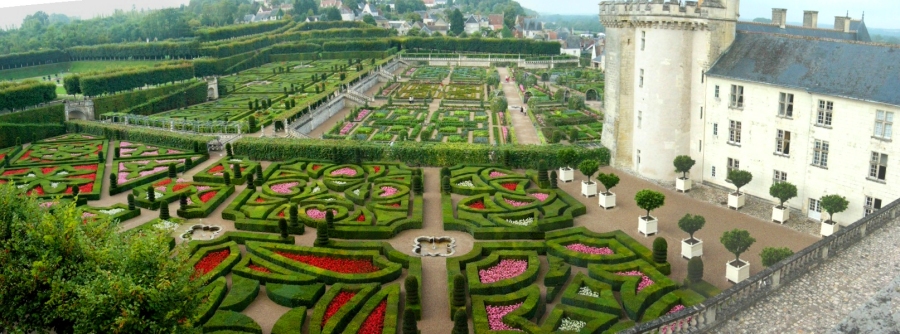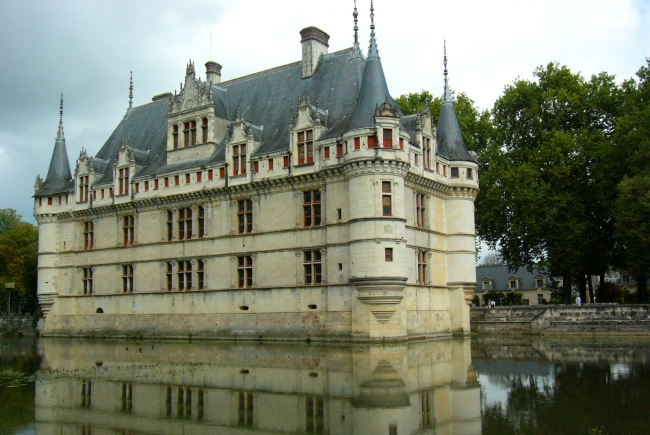|
After leaving Villandry we
traveled to the nearby château Azay-le-Rideau. The
placement of this smaller château couldn't be better--a
renaissance island in the middle of the river Indre. To be
honest, I was a bit underwhelmed by the interiors here--they seemed
dark and uninspired. That may very well be because of on going
renovations within or, perhaps, because Chenonceau's interiors set a
hard standard to follow. I can't deny, though, that the
craftsmanship throughout is excellent.
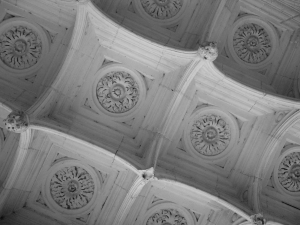
Stone work in the ceiling of
the great staircase at
Azay-le-Ridea.
We returned to Tours for lunch and, after a quick
sandwich, re-embarked to the east. (The first two châteaux
had both been to the west of Tours.)
On the way to our first stop, the château de Chambord, we stopped
to get a view of the château d'Amboise from across the river
Loire. The Chapelle St-Hubert on the château's grounds is
said to be the burial grounds of Leonardo da Vinci. A naked
statue of him in bronze is placed across the river. ("No ladies
can go to see the statue," our tour guide said. "It's too well
endowed.")
I did not expect to be blown away by Chambord--after all, I
had seen Versailles only two days before and figured the enourmous-size
trick had played itself out already. What I wasn't counting on
was the astounding beauty and elegance of the design--accompanied by an
immense complexity of details. I could, without much
encouragement, go on for a great length of time about Chambord--I'll do
my best not to.
Leonardo da Vinci, it is said, assisted king Francois I with the
initial design for the château. The building is laid out
around an incredible double helix staircase that is placed in the exact
center of the keep. Each of the three main floors is
exceptionally tall--at least 20 some feet--and all of the bedrooms have
either four or six closets, often arranged on two different
levels. The most interesting fact about this château,
though, is how utterly unsuccessful it has been as a residence.
That is to say, if you added up all the nights its been occupied by its
various owners over its nearly five hundred years of existence it comes
to about 12 years.
For a large picture of Chambord taken from a courtyard balcony click here. (Ben can be seen taking a
picture.)
We explored the château for well a couple of hours, stumbling
across endless rooms. One of the most surprising was a gallery of hunting trophies (read:
mounted skulls with antlers) all shot in the early 20th century by a
female hunter.
We left Chambord to visit the last château
of the day: Cheverny. Cheverny was different from the other
châteaux we saw in that it remains a private residence of
descendants of the original owners. Unlike their ancestors,
however, the current residents live in apartments on the top floor of
the building leaving the grand rooms on the first two levels open to
the public.
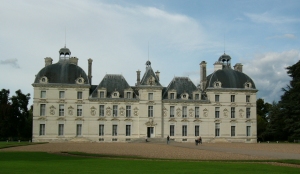
The château
de Cheverny.
The interiors of Cheverny are markedly different from the
other châteaux we had visited. This is due both to the fact
that Cheverny dates to the early 17th century (rather than 16th) and to
the fact that, as an actual residence, it features stylistic influences
all the way up to the 20th century. Very charming, really.
The real stars of Cheverny, however, are the puppies. For hunting
purposes the owner keeps a pack of 100 or so hounds. They get fed
every day at 5pm sharp. And damn are they ever hungry. Here they are.
We had a nice time tasting wine at the Vouvray cave and then it was
back to Tours.
|
|

The château
d'Amboise seen over the
Loire. The small spire surrounded by flags in the middle of the
picture is atop the chapel in which Leonardo da Vinci is buried.
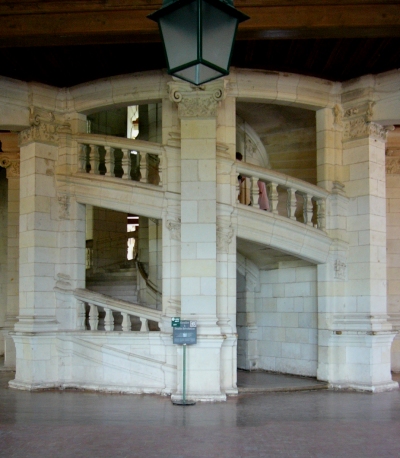
The double helix stair
case at the ground
floor of Chambord.
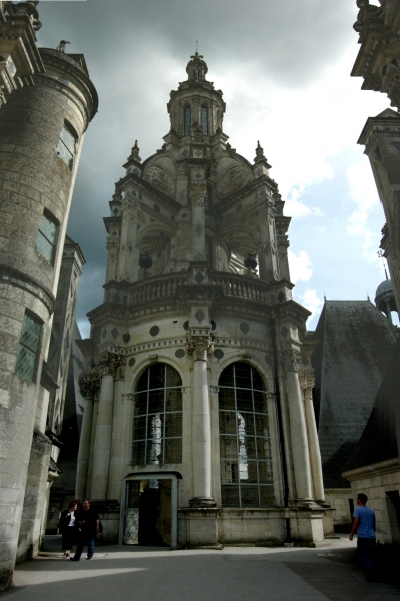
The giant spiral staircase
breaks through the roof
to create the tall spire in the center of the building.
|
